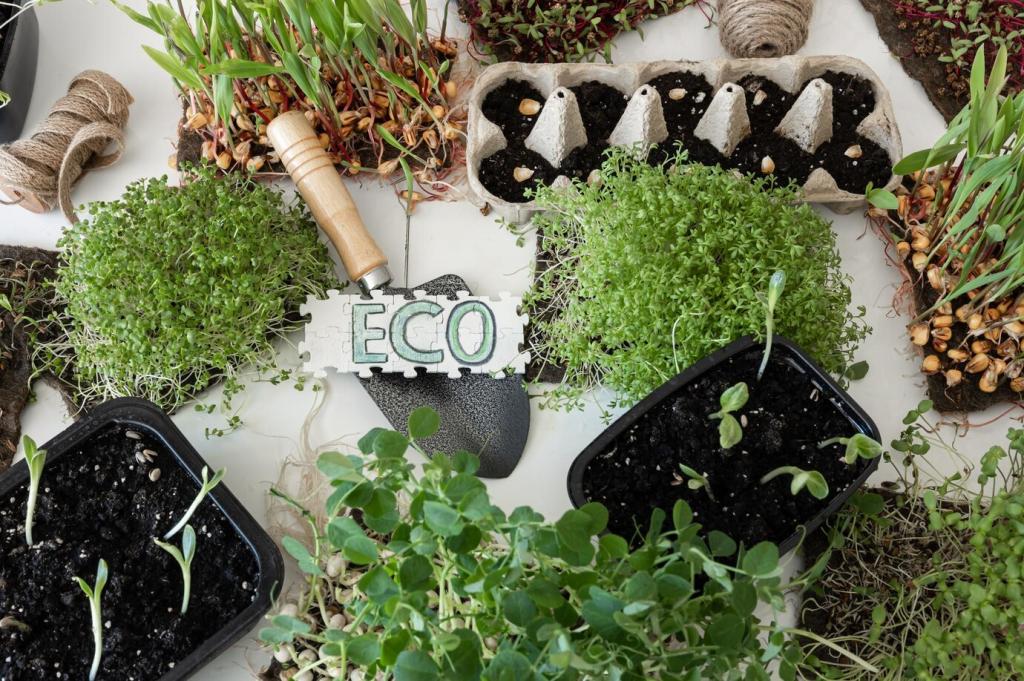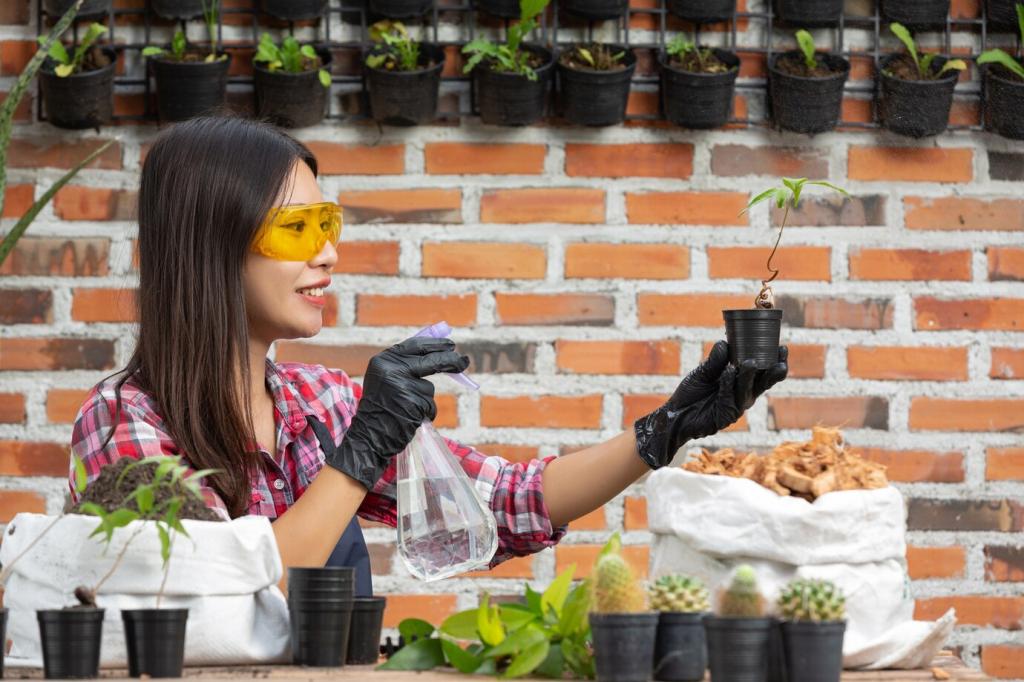
Composting Techniques for Sustainable Gardening: Turn Waste Into Living Soil
Chosen theme: Composting Techniques for Sustainable Gardening. Discover practical, science-backed methods, personal stories, and easy habits to transform kitchen scraps and yard debris into nutrient-rich compost that nourishes resilient, climate-smart gardens. Join the conversation and subscribe for seasonal tips.
Start with the Science: Carbon, Nitrogen, Air, and Water
01
Getting the Carbon to Nitrogen Balance Right
Aim for roughly a thirty to one carbon to nitrogen balance to keep microbes happy and decomposition steady. Mix dry browns like leaves with juicy greens like kitchen scraps. Share your favorite brown to green combo in the comments and compare results.
02
Managing Moisture Like a Pro
Moisture should feel like a wrung-out sponge, never dripping, never dusty. Lightly sprinkle water during building, then check weekly with a squeeze test. If too wet, add shredded cardboard. If too dry, water in layers. Tell us how your climate affects moisture.
03
Aeration and Structure for Happy Microbes
Airflow fuels aerobic microbes that prevent odors. Layer chunky twigs or corn stalks at the base, then mix in materials to avoid mats. Turn the pile or use an aeration tool. Comment with your turning schedule and how it impacts heating and breakdown.

Hot Pile for Fast Results
A hot pile needs a generous volume, balanced ingredients, and frequent turning to stay above one hundred thirty degrees Fahrenheit. It can finish in weeks, destroying many weed seeds. Post your thermometer readings this month and share how often you turn.

Low-Effort Cold Compost
Cold composting is a slow, patient method perfect for busy gardeners. Add materials as they come, cover with browns, and let time do the heavy lifting. It takes months, sometimes more. Tell us what surprises you have found when uncovering mature layers.
Tools and Setups That Make Composting Easier
Bins, Piles, and Tumblers Compared
Open piles are flexible and affordable, bins offer neat containment, and tumblers speed aeration with clean turning. Choose based on space, budget, and mobility. What works in your yard or balcony setup? Comment and help neighbors match tools to needs.
DIY Builds from Pallets and Wire
Repurpose wooden pallets, hardware cloth, or welded wire to build breathable three-bin systems for staging fresh, cooking, and finished compost. Label each bay and rotate materials forward. Share your build dimensions and subscribe for our downloadable cut list.
Smart Add-ons: Thermometers, Aerators, Sifters
A long-stem compost thermometer tracks core heat, an aeration wand reduces heavy turning, and a simple screen sifts finished compost. These tools save time and backs. Tell us which gadget changed your routine and why it boosted your compost confidence.
Troubleshooting: Odors, Pests, and Soggy Piles
Rotten or ammonia odors usually mean too much nitrogen or too little air. Add carbon-rich browns, fluff the pile, and cap fresh scraps with leaves. Tell us your fastest fix and how long it took for the smell to disappear completely.
Troubleshooting: Odors, Pests, and Soggy Piles
Rodent-proof with tight lids, half-inch wire mesh under bins, and diligent covering of food scraps. Skip meat and oily foods. When my neighbor added a mesh base, activity dropped immediately. Share your humane deterrent strategy and what finally worked.


Vermicomposting Indoors or in the Garage
Red wigglers transform food waste into a gentle, microbe-rich amendment called vermicast. Maintain bedding moisture, feed modestly, and harvest castings with light separation. Share your worm bin setup, favorite bedding recipe, and tips for avoiding fruit flies.
Bokashi Pre-Composting for Cooked Scraps
Bokashi ferments kitchen leftovers, including small amounts of cooked food, using inoculated bran and airtight buckets. After fermentation, bury or add to a hot pile to finish. Tell us how bokashi changed your scrap routine and reduced weekly trash volume.
Static Piles and Bioreactors for Busy Gardeners
A well-aerated static pile or Johnson Su style bioreactor composts with minimal turning, relying on vertical airflow and moisture management. It takes patience but yields stable, fungal-leaning compost. Share your build notes and subscribe for our design guide.
Spread a thin layer of finished compost and cover with mulch to feed from the surface, where worms and fungi work. This no-dig approach protects structure. Post before and after photos of your beds and report moisture savings during hot spells.
Using Compost Wisely in the Garden
Aerated teas and simple extracts can move microbes and soluble nutrients to plant surfaces and roots. Use clean tools, balanced recipes, and site-specific trials. Comment with your brew schedule, dilution rates, and observations from side-by-side plant comparisons.
Using Compost Wisely in the Garden
Trade materials with neighbors, cafes, or tree crews to balance supplies. When we swapped coffee grounds for maple leaves, both piles improved overnight. Post your local sources and invite a friend to join a neighborhood compost exchange this weekend.

